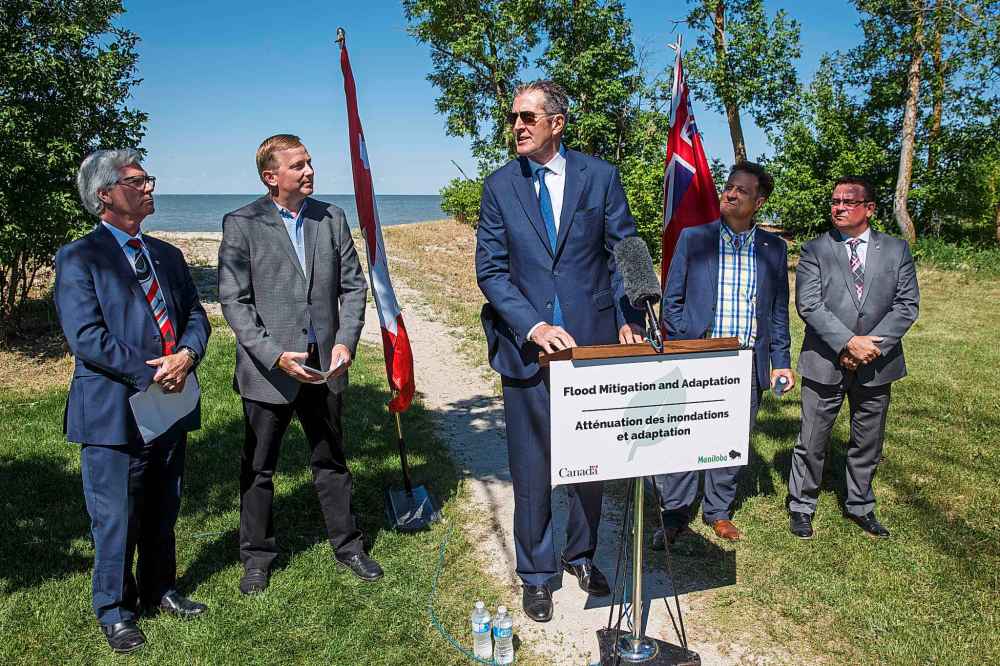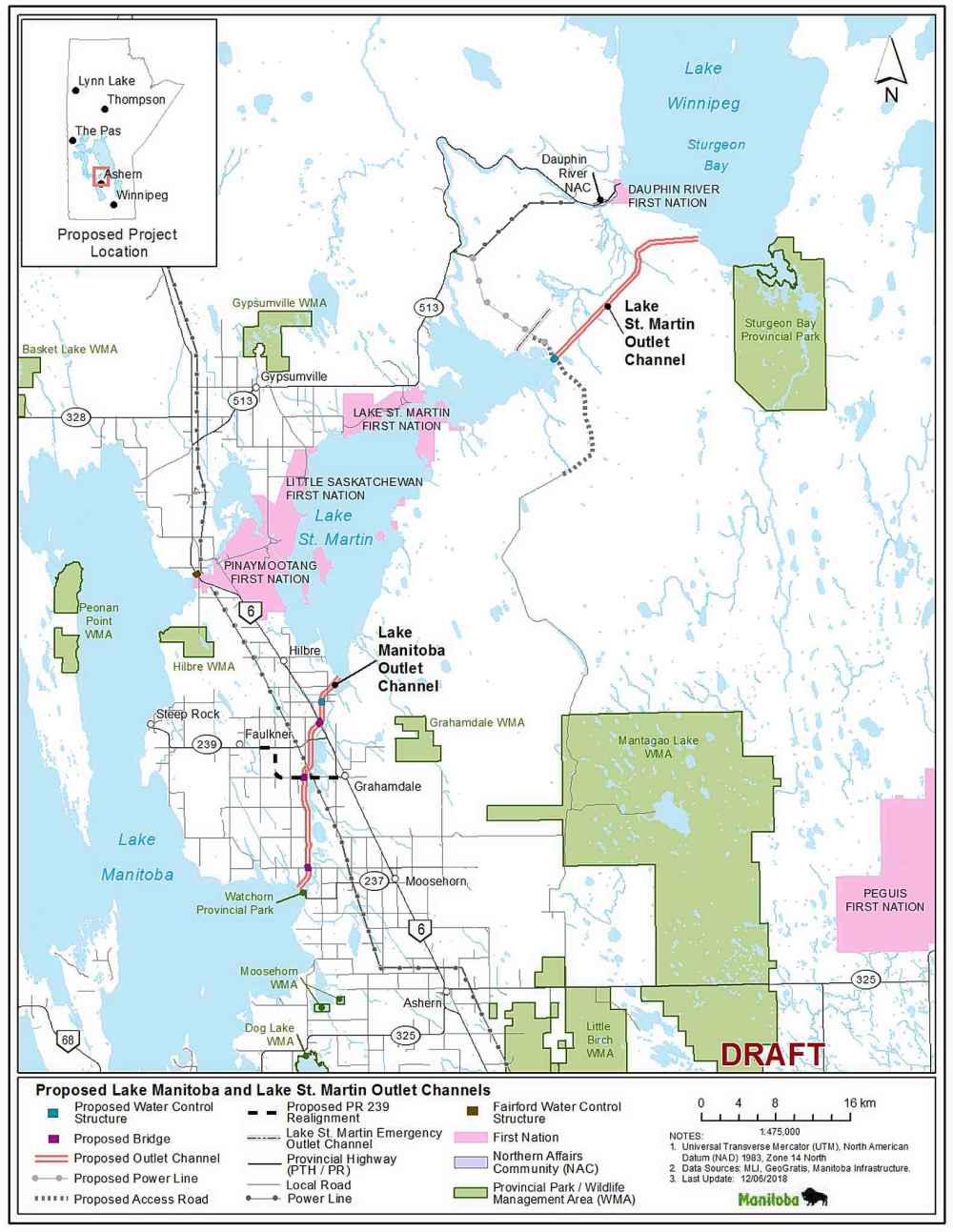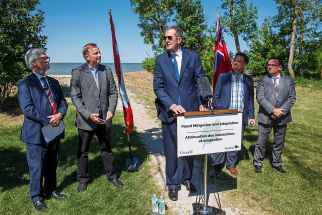Flooding outlet channels get pledges of $540 million
Read this article for free:
or
Already have an account? Log in here »
To continue reading, please subscribe:
Monthly Digital Subscription
$0 for the first 4 weeks*
- Enjoy unlimited reading on winnipegfreepress.com
- Read the E-Edition, our digital replica newspaper
- Access News Break, our award-winning app
- Play interactive puzzles
*No charge for 4 weeks then price increases to the regular rate of $19.00 plus GST every four weeks. Offer available to new and qualified returning subscribers only. Cancel any time.
Monthly Digital Subscription
$4.75/week*
- Enjoy unlimited reading on winnipegfreepress.com
- Read the E-Edition, our digital replica newspaper
- Access News Break, our award-winning app
- Play interactive puzzles
*Billed as $19 plus GST every four weeks. Cancel any time.
To continue reading, please subscribe:
Add Free Press access to your Brandon Sun subscription for only an additional
$1 for the first 4 weeks*
*Your next subscription payment will increase by $1.00 and you will be charged $16.99 plus GST for four weeks. After four weeks, your payment will increase to $23.99 plus GST every four weeks.
Read unlimited articles for free today:
or
Already have an account? Log in here »
Hey there, time traveller!
This article was published 18/06/2018 (2735 days ago), so information in it may no longer be current.
ST. LAURENT — The federal and Manitoba governments have set the wheels in motion on a massive two-part infrastructure project to reduce flooding of communities surrounding Lake Manitoba and Lake St. Martin.
Construction of two 23-kilometre-long outlet channels to control water levels on each of the two lakes could begin as soon as the fall of 2019.
At a news conference to formally announce the project, Premier Brian Pallister and Natural Resources Minister Jim Carr said Monday the total budgeted cost would be $540 million, with Ottawa shelling out $247.5 million and the province contributing $292.5 million.

“There are no impediments foreseen for this,” said Carr. “The funding is in place. We believe it will proceed quickly, as it should.”
Pallister said the announcement is a recognition of decades of hardships “that have been imposed on the people of this basin.”
“For the entire history of our province, this is a region that’s been vulnerable to flooding,” he said, standing on Lake Manitoba’s southeast shore, which has been battered by flooding in recent years. “Far too many times communities have been devastated.”
Environmental approvals and consultations with Indigenous groups are expected to continue until next spring. In the interim, construction of an access road to the Lake St. Martin construction area is underway.
In 2011, a devastating flood displaced whole communities, swamped farmland, ruined cottages and businesses and cost governments hundreds of millions of dollars in compensation payments. The flooding sparked a renewed commitment to build outlet channels for the two lakes.
Decades earlier, in 1970, the Portage Diversion, opened to protect Winnipeg and other communities on the Lower Assiniboine River, channelling water into Lake Manitoba during flood years.
The Fairford and Dauphin rivers connect Lake Manitoba and Lake St. Martin with Lake Winnipeg. The two new outlets will run separately from those rivers. The new Lake Manitoba outlet channel will handle 7,500 cubic feet of water per second, while the Lake St. Martin outlet project will nearly triple the capacity of an emergency channel constructed in 2011 to 11,500 cfs.

The Lake Manitoba outlet channel will run north from Watchorn Bay to Birch Bay on Lake St. Martin. The Lake St. Martin outlet will run northeast from Lake St. Martin to Lake Winnipeg, south of Willow Point.
A number of Interlake landowners who will be directly impacted by the Lake Manitoba construction project claim the province could have chosen a shorter route that would have affected fewer farmers. They also say they’ve been largely left in the dark in the lead-up to Monday’s announcement. They say details of compensation packages for the land they will lose have yet to be worked out.
Brad Dreger, who farms a half mile west of Grahamdale, said he hasn’t heard from any government officials since taking his concerns directly to the premier at a meeting in April.
“They have not contacted me once. And it’s getting pretty frustrating because we’d like to know what’s happening,” he said Monday. “We seem to be the last ones to know, and we’re losing our land.
Dreger, who produces grain, alfalfa seed and leafcutter bees, said the proposed channel will cut through six quarter-sections of his land, necessitating lengthy detours to reach what are now parts of the same field. An area highway — No. 239 — will also be relocated to within 30 metres of his house.
Dreger said Pallister told him in April that the government needed to complete consultations with Indigenous communities before it dealt with other landowners. He said he doesn’t understand why the government can’t talk to both groups simultaneously.

Noting the impact of the lake channel construction on some landowners Monday, Pallister promised “a respectful process.”
“I think it’s important we satisfy those needs for information. But I also think it’s important we understand that the people in this basin have made tremendous sacrifices over a long period of time to keep safe the people of Winnipeg and others throughout the province, and they deserve to get their lives back.”
larry.kusch@freepress.mb.ca

Our newsroom depends on a growing audience of readers to power our journalism. If you are not a paid reader, please consider becoming a subscriber.
Our newsroom depends on its audience of readers to power our journalism. Thank you for your support.









